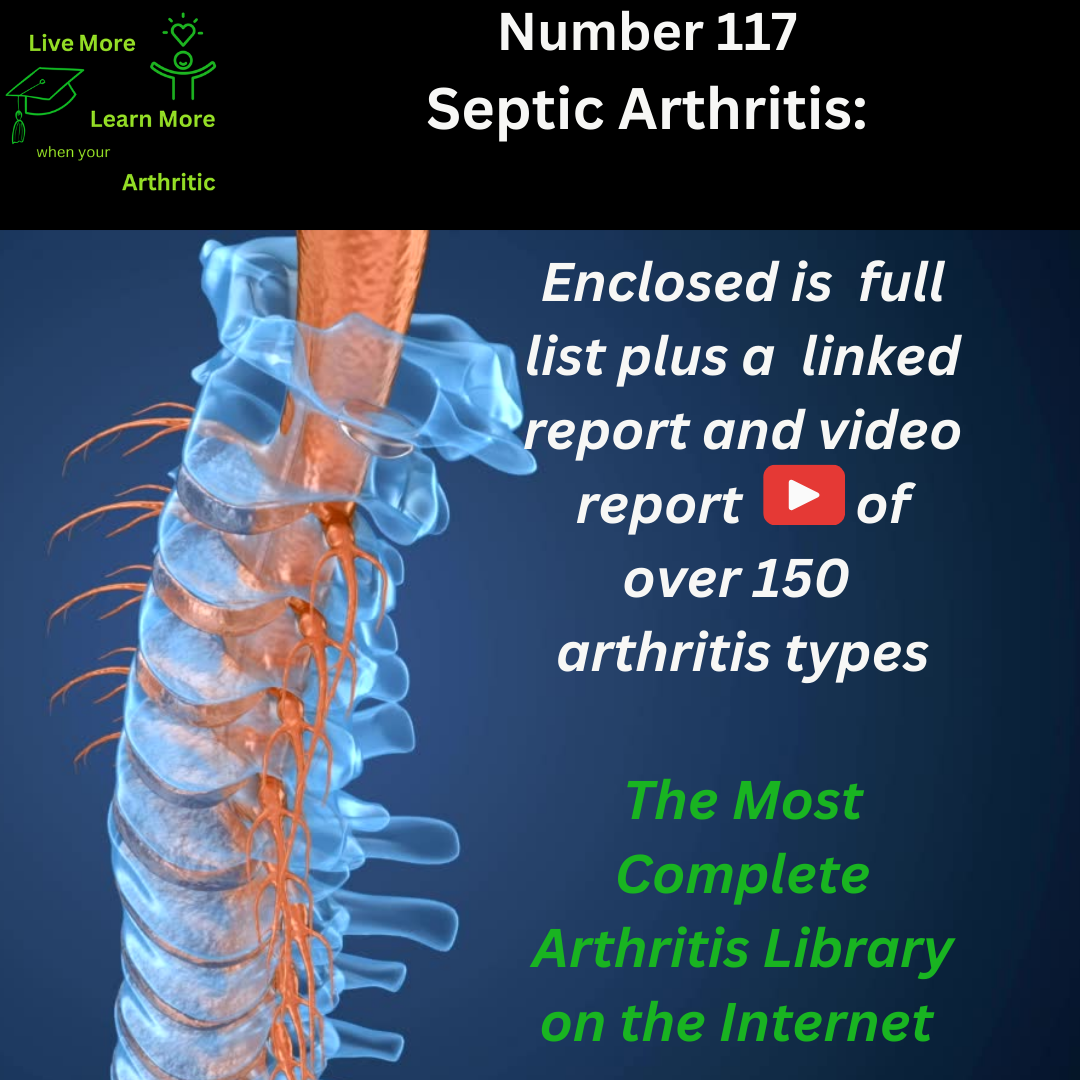
Septic Arthritis: Number 117 of around 150 types of Arthritis
Exploring Septic Arthritis
Septic arthritis, also known as infectious arthritis, is a serious infection of the joints that can lead to rapid joint deterioration and significant disability if not promptly treated. Let’s dive into the details of this condition, including affected joints, causes, symptoms, and possible complications.
Septic arthritis can affect any joint in the body, but it most commonly targets large joints such as the knee, hip, shoulder, and elbow. The infection causes intense pain, swelling, redness, and warmth around the affected joint. Additionally, individuals with septic arthritis often experience fever and chills, reflecting the body’s immune response to the infection.
Description and Causes
The disease occurs when bacteria or other infectious agents invade a joint, leading to inflammation and destruction of cartilage and surrounding tissues. The infection can reach the joint through direct injury, surgery, or spread from elsewhere in the body via the bloodstream.
Onset and Risk Factors
Septic arthritis can affect people of any age, but it’s more common in young children and older adults. Individuals with weakened immune systems, chronic illnesses such as diabetes or rheumatoid arthritis, or those with a history of joint trauma or surgery are at higher risk.
Complications and Impact
If not treated promptly, septic arthritis can lead to irreversible joint damage, joint deformities, and systemic infections such as sepsis. The infection can erode cartilage and bone within the joint, causing long-term disability and chronic pain.
Mechanism of Symptoms
The inflammation associated with septic arthritis leads to swelling and increased pressure within the joint, causing pain and limiting joint movement. The infection also triggers the release of inflammatory chemicals that further damage joint structures.
Improving Quality of Life
Early diagnosis and prompt treatment with antibiotics and drainage of the infected joint are essential to prevent permanent joint damage. Physical therapy and rehabilitation can help restore joint function and mobility after the infection is controlled.
Possible Complications
Complications of septic arthritis can include joint destruction, chronic pain, joint stiffness, and recurrent infections. In severe cases, joint replacement surgery may be necessary to restore function and relieve pain.
Demographic Trends
Septic arthritis can affect individuals of all ages, but it’s more common in infants, the elderly, and those with weakened immune systems. In adults, men are slightly more affected than women, possibly due to higher rates of joint injuries and certain risk factors.
People with underlying conditions such as diabetes, HIV/AIDS, or autoimmune disorders like rheumatoid arthritis are at increased risk of developing septic arthritis due to compromised immune function. These conditions weaken the body’s ability to fight off infections effectively.
In summary, septic arthritis is a serious joint infection that requires prompt medical attention to prevent irreversible joint damage and complications. With early diagnosis, appropriate treatment, and rehabilitation, individuals can achieve a higher quality of life despite the challenges posed by this condition.


